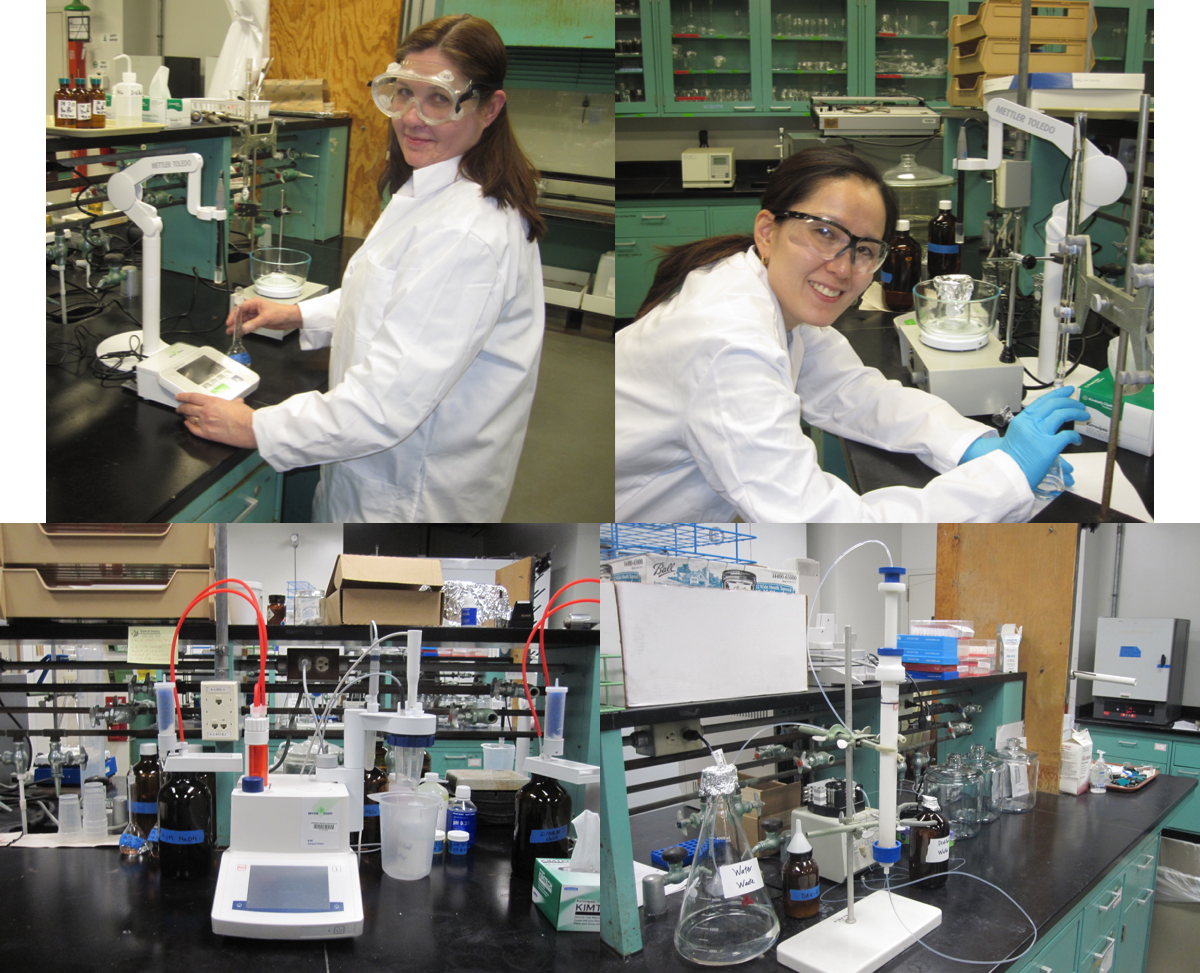| 1. Sources, fate and
impacts of pharmaceutical chemicals, steroids and xenoestrogens (PCXSs)
in aquatic ecosystems. GC-MS and LC-MS/MS are used to measure
PCSXs in water, sediments and fish in the tidal freshwater Potomac
River through an ongoing study in Hunting Creek (Alexandria, VA)
supported by Alex Renew Enterprises.
Our research collaborators
contribute vital expertise in analytical chemistry (Dr. Tom Huff of the
Mason Shared Research Instrumentation Facility -- extraction
technology, GC-MS and LC-MS/MS), and fish and plankton ecology (Drs.
Chris Jones and Kim De Mutsert from the Environmental Science &
Policy Department). Monica Ahir (MS Chemistry & Biochemistry) and Michael Cagle (MS Environmental Science & Policy) are investigating the sources, distribution and food chain transfer of PCSXs in the tidal freshwater Potomac River. Both use LC-MS/MS (Waters Alliance 2690 HPLC with Micromass Quattro micro triple-stage-quadrapole mass spectrometer) in their projects. Selected Publications
|
2.
Binding of pharma-chemicals to aquatic humic substances (AHS). Fluorescence
spectrophotometry is used to experimentally determine sorption
constants (Kd)
through fluorescence quenching. Carol Ajjan
(PhD Chemistry & Biochemistry) and Dan Cairnie (BS Chemistry) use a
Shimadzu RF 6000 fluorometer to determine the binding of a variety of
pharma-chemicals in several sources of AHS. Stern-Volmer and Ryan-Weber
models are used with non-linear curve fitting to derive Kd values from quenching experiments. |
3.
Acid dissociation and charge properties of aquatic humic substances
(AHS). Auto-titration is used to determine the acid dissociation
constants of AHS obtained from local sources (DAX-8 resin isolation).
Sharon Becker (BS/MS Chemistry-Biochemistry) and June Kang (MS Chemistry)
use Mettler-Toledo GS10 auto-titrators in conjuction with a modified
Henderson-Hasselbalch model (MHHM) and non-linear curve fitting to
obtain acid dissociation constants (Ka ) in AHS. ) in AHS. |